Notice: Undefined variable: page in /home/vrxdg1855sn3/public_html/wp-content/themes/72tree/content.php on line 15
Notice: Trying to get property 'ID' of non-object in /home/vrxdg1855sn3/public_html/wp-content/themes/72tree/content.php on line 15
How To Kill and Stop Tree Stumps from Growing Back
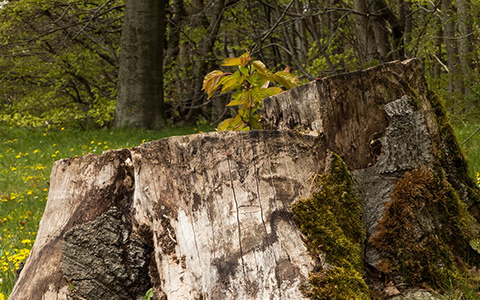
Is the tree you cut down trying to grow back from the stump? Many times, when trees get cut down, the stump and roots will continue to send out new growth. Knowing why they do this and what to do with it once the tree is gone can save you loads of time, effort, and money.
72tree.com assembled the following information on why trees grow back after being cut down, how to kill a tree stump, and remove it.
Do Trees Grow Back After Being Cut Down
Yes, they can. That’s why it’s essential to be knowledgeable about tree growth when you need to remove one permanently.
Cut trees with enough stored sugars and nutrients in their roots can produce sprouts from the roots and trunk as a measure of survival and reproduction. The following species will commonly sprout after being cut down:
• Poplars
• Maples
• Lindens
• Boxelder
• Red Oak
• Willows
• Beech
• Ash
When this survival mechanism is triggered, single, or multiple sprouts may appear. If left unabated, these sprouts will grow into trees without having grown a stable root plate, and likely pose a much more immense falling hazard than the original tree.
How to Stop Tree Stumps and Roots from Sprouting
Before you select a method to kill or remove a tree stump, evaluate the potential impact on the environment and immediate surroundings. The following are methods to eliminate tree stumps from sprouting:
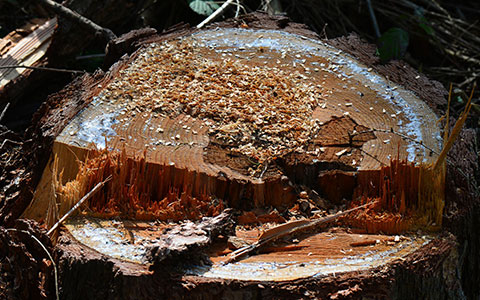
Use Fertilizer for Rapid Decay – To accelerate the decaying process of the stump, do the following:
• Cut the stump to soil level
• Drill half-inch to inch-wide holes six to eight inches deep into the stump and aerial roots
• Apply a slow-release fertilizer to the holes and over the stump
• Cover and “mound” with soil
With little to no impact on the environment, this method is highly effective but takes several months to decompose the stump fully.
Note: In this and the following methods, areal roots are the large protruding “anchor” roots at the base of the stump.
Using Epsom or Rock Salt to Kill It – This process is one of the more economical, but takes several months to kill the stump. Apply this method by:
• Acquiring enough Epsom or rock salt to fill several deep holes and cavities in the stump
• Drill half-inch to inch-wide holes six to eight inches deep into the stump and aerial roots
• Pack the holes and any cavities with salt
• Use hot wax or another water-proof sealant to seal the holes and cover the cavities
• Secure a dark plastic tarp or trash bag over and around the stump to keep rain and sunlight out
In six to ten weeks, your tree stump should be dead and breaking apart.
Tip: While table salt will produce similar results, it is very harmful to the soil in the vicinity of the stump. Use only 100% Epsom or rock salt with no added ingredients.
Cover The Stump To Kill It – You can slowly kill your tree stump with this method, and it’s free.
• Secure a dark plastic tarp or trash bag over and around the stump to keep rain and sunlight out
Without adding any chemicals or salt, this method will take up to six months for the stump to die and start to decay.
While the tree is covered, there should be no growth. However, if sprouts do appear while the stump is still alive, cut them off.
Burn The Stump – Burning the stump is an effective way to remove it after it has died. The following steps will help you safely burn and remove your tree stump:
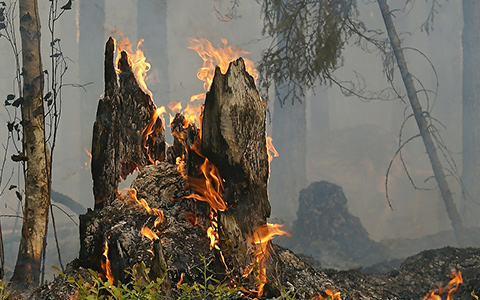
• Drill several half-inch to inch-wide holes six to eight inches deep into the stump and aerial roots. The deeper you can drill into the stump will ensure that it burns to the roots.
• Pour enough kerosene into the holes to thoroughly saturate the stump.
• Build a fire on top of the stump by placing scrap wood, twigs, and small logs on it. As the fire burns down, add more wood as necessary to keep the fire ablaze.
• When the stump has burned away, remove the ashes and replace them with soil.
As with any controlled burn, never leave it unattended. Keep a hose or fire extinguisher on hand in case the fire gets out of hand or begins to spread.
NOTE: Before using this method, consult your municipal ordinances to ensure that your controlled burn is legal, for more information call 411.
Tip: Turn the stump burning into a “bonfire” and invite friends and family over for an outside gathering.
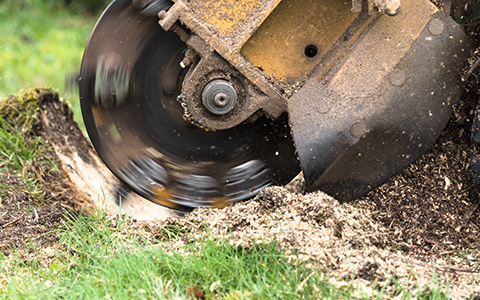
Grind The Stump – Grinding the stump allows you to chop it up and remove it immediately. This method requires protective clothing and equipment and some knowledge of machinery operation and safety. The following steps will help you safely remove your tree stump:
• Use a chainsaw to cut the stump as close to the ground as possible, leaving a level surface
• Grind the stump and any areal roots until fully ground up
• Remove the wood chips (use them for mulch or discard them)
• Fill the hole with fresh soil
Keep children and pets at a safe distance while the stump grinder is in use.
Note: Before operating this or any other machinery, refer to the operating manual to ensure its proper and safe use. There may be safety features that you are not aware of on the machine.
Call A Professional Tree Service – Take all of the stress, equipment, time, and chemicals out of the process by calling a professional tree service to come out and remove your tree stump. They have specialized equipment and experience to remove your tree stump quickly and safely.
Stop Your Tree Stump from Growing Back
In this article, you discovered why trees continue sending up sprouts after being cut down, how to kill a tree stump, and how to completely remove one.
By killing and removing your tree stump, you are preventing sprouts from growing and creating a hazard to surrounding structures and people.
Allowing a tree to re-grow in this manner is significantly dangerous. These new trees grow without establishing a firm root plate and may topple as they increase in size without warning.
Sources:
umass.edu/urbantree/factsheets/26killastump.html
ucanr.edu/blogs/blogcore/postdetail.cfm?postnum=20662
warnell.uga.edu/sites/default/files/publications/Stump%20Removal%20pub_14-8.pdf
Notice: Undefined variable: page in /home/vrxdg1855sn3/public_html/wp-content/themes/72tree/content.php on line 15
Notice: Trying to get property 'ID' of non-object in /home/vrxdg1855sn3/public_html/wp-content/themes/72tree/content.php on line 15
Caring for and Planting a Potted Christmas Tree

With some simple steps, you can avoid significantly damaging your potted Christmas tree while it’s in your home. Likewise, by taking a few essential measures into consideration, your potted Christmas tree will thrive outside for years to come.
72tree.com assembled the following list of care and planting tips for your potted Christmas tree.
Potted Christmas Tree Selection
Responsible tree care begins with your tree selection. The following will help you get the right tree for your holiday enjoyment and avoid transporting a potential infestation or tree disease to your landscape:
• Some highly sought after species for potted Christmas trees include Fraser fir, white pine, and Norway, white and Colorado blue spruces.
• The species should be adapted to your USDA hardiness zone
• The root ball or soil in the pot should be moist
• The tree should appear sturdy with even growth
• There should be no signs of disease or infestation
• Little to no needles should fall off the tree when shaken
• Branches and needles should be pliable when run through your hand
• Look for potted trees that are kept outside (these trees should be in a state of dormancy)
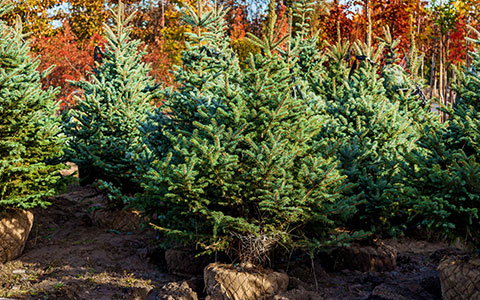
If the tree is purchased from a climate-controlled nursery, avoid trees with new growth at the end of its stems. This new growth (triggered by the warmth indoors) will appear bright green. It will not have time to harden before being planted outside and exposed to winter temperatures after the holiday.
Visit 72tree.com/trees-shrubs-usda-hardiness-zone-map/ to learn more about the hardiness zones and how to determine your precise zone.
Tip: Look for trees in the 4 to 5-foot range. Since these trees still have their roots and surrounding soil, they will be much heavier than live cut trees. The taller the tree, the more roots and soil are required. Thus, the shorter the tree, the more manageable it will be during transport and planting.
How To Bring Your Potted Christmas Tree Indoors
Now that you have the perfect tree for your holiday celebration, use the following steps to acclimate the tree to come indoors:
Garage Your Tree – When you arrive home, leave your tree in the garage for two to three days. This will allow the tree to get used to warmer temperatures and avoid stressing it.
Stressed trees are highly susceptible to successful insect and disease attacks.
Digging A Hole for the Tree – While the tree is acclimating to go indoors, take some time to prepare its planting location outdoors. Take the following into consideration:
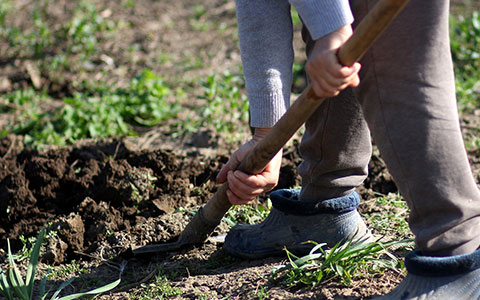
Know the species height and width at maturity. Your tree is likely capable of reaching heights of 80 to 100-feet and width of 20-feet or more. Choose a location away from power lines and at least 30-feet from any structures or paved areas in your landscape.
Now that you have a location, dig a hole 3-feet across and as deep as the root ball or pot. Keep the dug up soil in the garage (protected from freezing), fill the hole with straw, and cover it with wooden planks. This will help you avoid significant delays in case the ground freezes.
Inspect Your Tree – Once acclimated, thoroughly inspect your tree once more for signs of insect infestation before bringing it indoors.
Some of the potential insect passengers you may find include:
• Aphids
• Bark Beetles
• Scale
• Lanternflies
• Stink Bugs
Visit 72tree.com/preventing-eliminating-christmas-tree-bugs/ to read more about Christmas tree bug control and prevention.
Timing and Duration – Potted Christmas trees should be brought indoors as close to your holiday celebration as possible. Unlike cut Christmas trees, potted trees will react to the warmer temperature indoors and begin to exit dormancy.
From the time your tree is brought indoors, you have about ten days before you will need to get it back outside. While your tree is indoors, observe the following to promote its health:
• Place the tree in a location far from heat sources, including fireplaces, vents, portable heaters, stoves, etc.
• Use led lights on the tree to avoid drying it out. If conventional light strings are used, be sure to limit the time they are turned on.
• Water the tree daily with 30 to 40 ice cubes placed on the root ball or the soil in the pot.
• Help the tree remain in dormancy by putting it in a cooler room with an abundance of natural light.
Tip: If you detect any new growth or signs of sprouting at any time, remove all of the decorations and lighting. It’s time to get it outside.
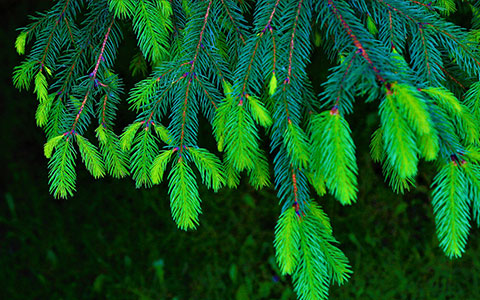
How To Take Your Potted Christmas Tree Outdoors
The same way you acclimated your tree to come indoors, you will need to acclimate it to go outdoors. You can accomplish this by removing all decorations and lighting, then moving it back to the garage for two to three days.
Planting Your Christmas Tree
The following steps will help you successfully plant your acclimated tree:
• Uncover the hole you previously dug and remove the straw
• Move the saved soil back to the side of the hole
• Fill the hole with water, let the water soak into the ground, and repeat
• Move the tree to the edge of the hole and gently lay it on its side (with the top of the tree pointing away from the hole)
• Carefully remove the pot (keep the soil intact)
• If the root ball is wrapped in burlap, leave the burlap on for now
• Slide the tree towards the center of the hole, so the root ball is at the center of the hole
• Raise the tree into its position (remove the burlap now)
• Loosen the soil in the root ball and free any circling roots
• Fill in the hole making sure the root flare does not get buried
• For stability, it may be necessary to stake the tree for the first 6 months
• Water the tree and add a 3-inch layer of organic mulch around the entire base without covering any part of the trunk
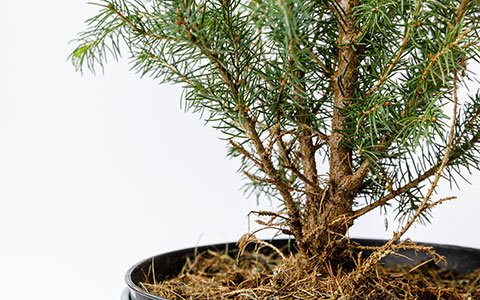
For more tips and guidance on successfully planting a tree, read 72tree.com/beginners-guide-tree-planting/
Note: If the ground has frozen, there is snow accumulation, or if your tree sprouted new growth and began to bud, don’t plant it just yet. Keep it and continue caring for it in the garage until the threat of freezing temperatures has passed.
Potted Christmas Tree Care And Planting
In this article, you discovered what it takes to care for a potted Christmas tree and plant it when your holiday celebrations are over.
By properly acclimating and caring for your potted tree, you can keep it from harm’s way and enjoy its beauty for years to come.
By neglecting the needs of your potted Christmas tree, it will likely end up stressed and suffering permanent damage.
Sources:
content.ces.ncsu.edu/selection-and-care-of-living-christmas-trees
canr.msu.edu/news/living_christmas_trees_another_real_tree_option
bbg.org/news/is_a_potted_christmas_tree_a_good_idea
Notice: Undefined variable: page in /home/vrxdg1855sn3/public_html/wp-content/themes/72tree/content.php on line 15
Notice: Trying to get property 'ID' of non-object in /home/vrxdg1855sn3/public_html/wp-content/themes/72tree/content.php on line 15
Common Maple Tree Diseases, Symptoms, Treatment, and Prevention
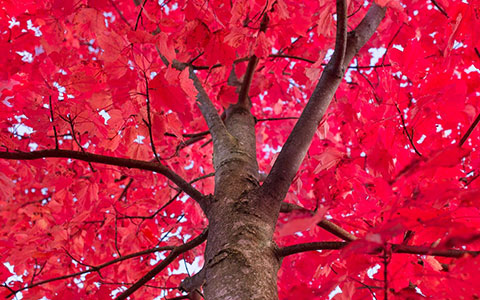
Stop your maple tree from needlessly dying. If caught in time, diseases that attack maples can be treated with success.
72tree.com of Alpharetta Ga, assembled the following list of diseases that affect maple trees, how to identify, treat, and prevent them.
Why do My Maple Tree Leaves Have Spots?
One of the easiest ways to detect maple tree diseases is through irregularities in shape or size, spots, and/or blemishes on the tree’s foliage.
The following diseases may cause spots to appear on your maple tree’s foliage:
Leaf Spot (Phyllosticta minima) – This fungal infection causes round spots about a quarter of an inch in diameter to appear on leaves. These spots will have a pronounced purple border and blackish dots in the center of the spot (fungal fruiting structures).
Treatment: Before fall, prune dead twigs, stems, and branches. Collect all clippings and destroy them (burning them is highly recommended) to prevent the spread of the fungus.
Have the tree evaluated to determine the extent of the infection and whether further action like using fungicides should be taken to protect your tree and surrounding landscape.
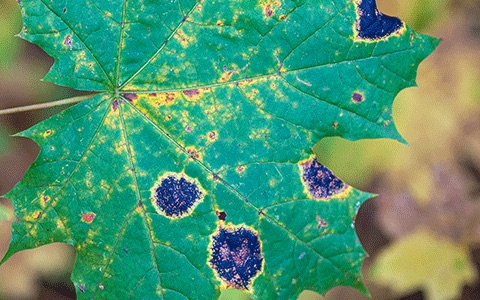
NOTE: Sanitize all equipment, including gloves and protective clothing that come in contact with an infected tree and its foliage.
Anthracnose (Aureobasidium apocryptum or Discula – Gloeosporium) – Anthracnose is a fungal infection that causes purple or brown streaks to occur alongside and between leaf veins. In some maple species, drought and heat stress can produce similar symptoms. You can confirm an anthracnose infection by locating small, brown fungal fruiting structures near the veins of affected leaves.
Treatment: The same measures and precautions for leaf spot should be used in the treatment of anthracnose.
NOTE: Anthracnose can lead to severe defoliation during a wet spring season.
Root Rot (Fomes fomentarius, Ganoderma lucidum, or Laetiporus sulfureus) – Once a fungal infection embeds itself in the trunk or the roots of a maple tree, there are three types of symptoms to watch for:
• Foliage in the entire crown or a section of it may suffer from chlorosis, wilt, die and eventually fall. This happens as the fungi cause hydraulic failure within the roots, trunk, and branches.
• Fungal fruiting structures (mushroom conks) will appear from late spring to mid-fall. For these structures to form, there must be rotting organic material within the tree.
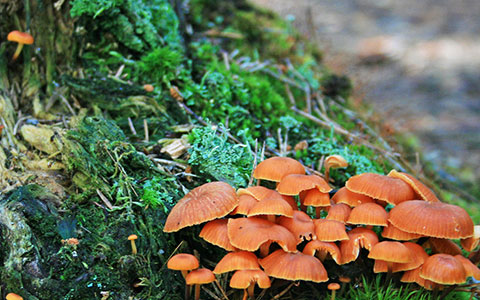
• Large black ants known as carpenter ants will make a nest for their colony within trees that suffer from heart rot. These ants do not burrow through heartwood, they remove the tissues rotting and softened from the infection.
Treatment: Once root rot or heart rot has been confirmed, have the tree professionally removed as quickly as possible.
NOTE: The presence of carpenter ants and fungal fruiting structures only occur after significant damage has been done to the tree. When the affected tree is within striking distance of your home, places where people congregate, or other structures and vehicles, the situation should be treated as an emergency.
Galls – These spots are irregular growths or swellings that occur from a reaction to tissue feeding or egg-laying by various species of mites and insects (commonly mistaken for fungal infection).
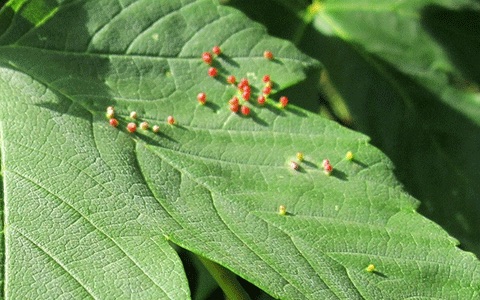
Galls appear in various ways. Each mite or insect species produces a distinctive gall shape and can range from wart-like bumps to felt-like patches to spindle-shaped protrusions. Galls develop in the spring, and once formed, the pest remains protected within the structure. Arborists can often identify which mite or insect has infested your tree by the shape and appearance of the galls.
Treatment: Leaf galls are relatively innocuous and rarely result in any long term damage to the tree. Applications of pesticides are relatively ineffective, as the pests are protected within the gall structure.
The most effective manner of gall removal is to handpick and destroy affected foliage before exit holes form and allow the pest(s) to move on. If the presence of galls is overwhelming, hire a professional tree service to evaluate the situation and recommend a course of action.
Maple Tree Disease Prevention
Maple tree disease prevention begins with good tree care practices. The healthier your tree is, the more vigorously it can fight back against diseases and infestations.
However, when the tree’s defenses fail, here are steps to prevent the disease or infestation from infecting surrounding trees:
• Prune affected limbs (before leaf-drop)
• Burn all pruned limbs and foliage
• Always sanitize pruning equipment after use on an infected tree
• Avoid tracking soil from around infected trees to areas around uninfected trees (many fungi and other pathogens thrive in the soil). Clean boots, protective clothing, tools, and equipment before leaving an infested area
• Replant resistant species after tree removal
• Avoid planting maple trees in areas with a history of tree diseases
• Have annual tree inspections and soil testing performed to detect any issues early on.
Black Spots on Maple Leaves
In this article, you discovered how to identify diseases that cause spots on maple tree leaves, how to treat them, and how to prevent them.
Prevent the decline of your maple tree by knowing what to do when a fungus or pathogen begins showing signs of infection.
Your choice to ignore signs that your tree is diseased or in decline can result in catastrophic fungal outbreaks to your landscape, or costly damages to your property when the tree falls.
Sources:
extension.psu.edu/maple-diseases
hgic.clemson.edu/factsheet/maple-diseases-insect-pests/
pnwhandbooks.org/plantdisease/host-disease/maple-acer-spp-verticillium-wilt
Notice: Undefined variable: page in /home/vrxdg1855sn3/public_html/wp-content/themes/72tree/content.php on line 15
Notice: Trying to get property 'ID' of non-object in /home/vrxdg1855sn3/public_html/wp-content/themes/72tree/content.php on line 15
Who is Responsible for Overhanging Tree Branches
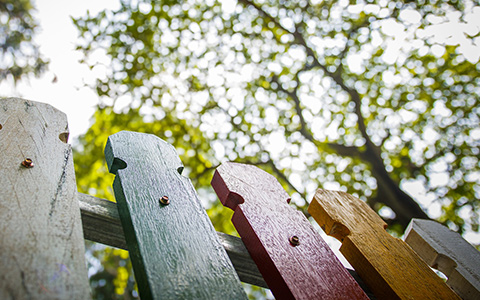
Don’t accept liability for a tree or its overhanging branches without clarifying responsibility. Once you know how to determine responsibility for a tree and its overhanging branches, you can better reach fair solutions with your neighbors during a tree dispute.
72tree.com gathered the following information on determining who owns and is responsible for a tree’s overhanging branches, and what actions to take.
Trees and Your Property Line
Whether you find yourself on the giving or receiving end of an overhanging tree complaint, it is essential to know who owns the tree in question.
When you purchased your property, you were likely required to get a property survey. If many years have elapsed or there is difficulty determining where the property line is, have a new survey conducted with the surveyor physically marking the property line.
All trees growing on your property with their trunks inside your property line are your responsibility.
In the rare case that a tree is growing directly on the property line, ownership and responsibility of that tree are equally shared between you and your neighbor.
Overhanging Tree Branches
As a tree grows upward, it also grows outward. Over time, some of those branches can grow past your property line overhanging your neighbor’s yard or home. The responsibilities of each property owner are typically as follows:
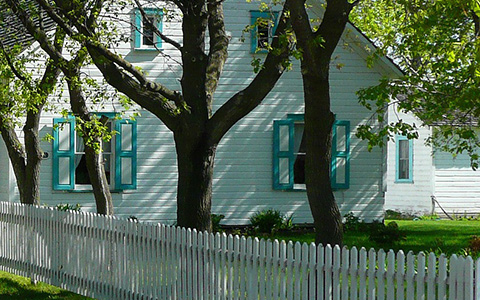
Owner of the Tree – You are responsible for the overall care of the tree, including:
• Watering, mulching, and fertilizing
• Staking or anchoring if the tree becomes unstable or is leaning
• Trimming or pruning the canopy (up to your property line)
• Detecting and treating illnesses and insect infestations. Learn more about tree health problems and solutions at 72tree.com/9-common-tree-health-problems-solutions/
If your tree succumbs to disease, infestation, or dies for any reason, the responsibility to remove the tree is yours. You could be held responsible for the damages it may cause if it should fall.
The Neighbor – Your neighbor is responsible for the following:
• The trimming or pruning of overhanging branches up to their property line*
• Cleaning fallen leaves, needles, twigs and other debris from the overhanging branches
Your neighbor should also make any concerns or complaints about potential hazards from the tree known to you.
If your neighbor documents this communication or files a complaint with the town, and you do nothing, you may be held liable for damages caused by any portion of the tree falling on your neighbor’s property.
*All trimming or pruning activities must be done in a way that promotes the health of the tree. If your neighbor’s actions result in the declining health or death of the tree, they may be held liable for the cost of the replacement of that tree.
Your Tree Falls on Your Neighbor’s Property
If your tree or a portion of the tree should fall on your neighbor’s property, the health of the tree when it fell is vital in determining responsibility.
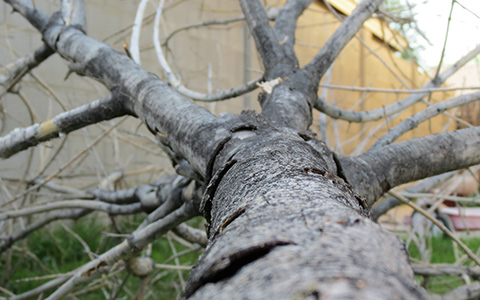
Healthy Tree – If the tree was healthy and well maintained with no signs of decay or infestation, the removal and any damages caused by the tree will be your neighbor’s responsibility.
The majority of homeowners insurance providers will cover such a claim.
Diseased or Dying Tree – If your tree had clear signs of disease, infestation, rot, or your neighbor filed a complaint about the hazard, you could be held liable for all damages caused by the falling tree.
Protect yourself and your neighbors by hiring a trusted tree service to perform annual inspections of your trees. These inspections allow them to detect any potential trouble and recommend a course of action.
Learn more about what to do when a neighbor’s tree falls on your house at 72tree.com/my-neighbors-tree-fell-on-my-house-now-what/
View Obstruction Ordinances
Throughout the United States, there are a few cities with “view ordinances.” These ordinances state the importance of the view to the value of the property.
If your tree reaches a height that obstructs a neighbor’s view (in a city with such ordinances), you may be ordered to reduce the height of the tree or remove it.
Before planting new trees on your property, it is worth the time and effort to research your city’s laws for these specific ordinances. Once you know the limitations imposed by these ordinances, you can select the appropriate species to plant.
Overhanging Tree Responsibility
In this article, you discovered how tree ownership is determined, what you are responsible for when trees overhang a neighbor’s property, and their responsibilities.
By properly caring for your trees and having them inspected annually, you can detect potential issues early and get them resolved before turning into a problem or dispute.
If you choose to neglect the health of your tree(s), you can be held liable for all damages caused by that tree falling on your neighbor’s property or house.
NOTE: Cities, municipalities, and towns have ordinances that may vary from the information presented in this article. It is always recommended that you search for your city’s tree ordinances to fully inform yourself.
Sources:
http://agrisk.umd.edu/blog/frequently-asked-questions-can-i-cut-my-neighbors-tree-back-from-our-property-line
hg.org/legal-articles/neighbor-s-right-to-build-36677
extension.tennessee.edu/publications/Documents/SP687.pdf
secure.caes.uga.edu/extension/publications/files/pdf/C%201099_1.PDF
Notice: Undefined variable: page in /home/vrxdg1855sn3/public_html/wp-content/themes/72tree/content.php on line 15
Notice: Trying to get property 'ID' of non-object in /home/vrxdg1855sn3/public_html/wp-content/themes/72tree/content.php on line 15
A Beginners Guide to Tree Planting
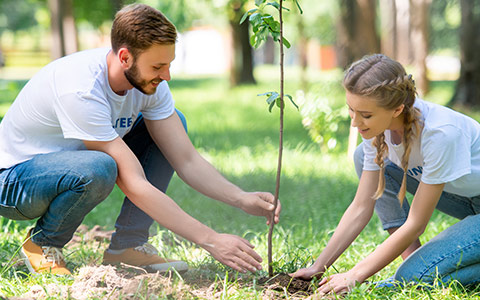
Your tree is more likely to die if you don’t consider the factors that affect its development during their planting. Your trees’ health is directly correlated to the time, location, pre-planning, and species that you choose ever before planting.
72tree.com assembled the following guide with professional tips to help you properly plant and care for your tree.
Best Time to Plant Trees
There is much debate as to when the best tree planting time is. For more moderate climates such as the south, southeast, or southwest, either early fall or early spring are appropriate planting times.
For locations where there is winter snow cover or ground freeze, spring (after the ground thaws) is the best time to plant.
Tree Location
Now that you’ve decided to plant a tree and identified the best time, you’ll need to choose a suitable location. In doing so, take the following factors into consideration:
Sunlight – Does the planting location get full sun (all day), partial sun (morning or evening), or full shade (no sun)
Water – Most tree species require well-drained soil. If your chosen location is in a low-lying area or a depression, water may accumulate and stand, leading to root rot and other diseases.
Tip: Verify that your location is well-drained after a rainstorm or run a hose at the site to see how the water accumulates or runs off.
Soil – The soil where you plant your tree should be loose, mixed with organic material, and turned to avoid compaction.
Tip: Many tree species can thrive in a soil pH level between 5 (acidic) and 7(neutral). You can raise the soil pH by adding lime or limestone and reduce the pH by adding aluminum sulfate, sulfur, manure, or compost (pH levels above 7 are alkaline).
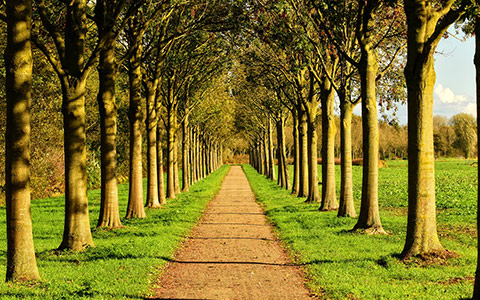
Spacing – When planting multiple trees, they can be spaced apart according to their mature canopy spread. Tree spacings from 20 to 60 feet apart are standard. This spacing allows the open-grown form of the tree canopy to develop naturally.
Conversely, when planted too close together, a tree may fail to reach its mature height and struggle to absorb enough sunlight and nutrients to remain healthy.
Tip: Follow spacing recommendations for your specific tree species.
Wind – The location you’ve selected should be observed over time to determine whether or not your tree will endure constant wind or violent wind gusts.
Tip: Stake young trees until they can support themselves without bending under pressure. Most trees will take one to two years before fully establishing their root systems.
Structures – A tree’s roots spread far from where it is planted. As roots spread, they thicken and may become invasive. When a tree is planted too close to a house, sidewalk, patio, or driveway, those roots can grow underneath the structure and break up or buckle the concrete.
Tip: Plant trees far from structures with concrete foundations or slabs, and install root barriers to protect building foundations, driveways, sidewalks, etc.
Protection – Weather and wildlife can stress or kill your tree as it matures. By planting shrubs near and around your tree, you can naturally lessen the impact of wind. Surrounding structures will also act in this capacity.
Tip: Discourage wildlife from grazing your tree’s foliage or damaging its bark by putting up chicken wire around the tree, using bark wraps, or by using chemical deterrents.
The USDA Plant Hardiness Zone Map defines planting zones from 1a to 13b. The zone in which you plan to plant a tree will determine which species you should select. You can determine your hardiness zone at planthardiness.ars.usda.gov/PHZMWeb/InteractiveMap.aspx
Tree Species
The species of tree you decide to plant can profoundly impact the surrounding landscape in various ways. Verify that the species you intend to plant is appropriate for the location in which you are planting and consider the following:
Deciduous or Evergreen Trees – If you want your tree to maintain a lush green appearance year-round, you are looking for an evergreen species which may include:
• Blue Spruce
• Scots Pine
• Green Giant Arborvitae
• Magnolia
• Holly
• Leyland Cypress
If you want to enjoy fall colors as your tree prepares to go dormant for the winter, you are looking for one of the many deciduous species which may include:
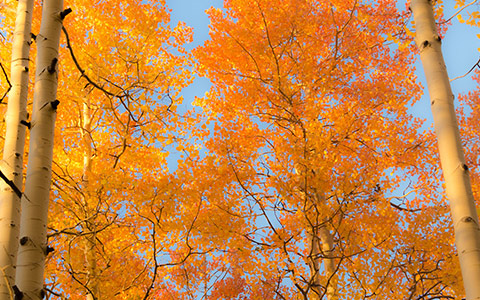
• Oaks
• Maples
• Birch
• Sweetgum
• Tulip
• Quaking Aspen
Tip: Regarding quaking aspens, the species has an invasive root system and will produce suckers that are clones of the original tree. When planting this species, be sure that it has enough space to grow and spread without obstruction.
Understory or Overstory – An understory tree may be best if your planting location is restricted or you desire a mid-sized tree. The following species are considered understory, and are shade tolerant reaching mature heights of 20 to 40 feet:
• Flowering Dogwood
• Eastern Redbud
• White Fringetree
• Japanese Maple
• Black Aldar
If you are looking for a tree that makes a statement by its size and you have the landscape to accommodate its growth, the following overstory species reach mature heights of 60 to over 100 feet:
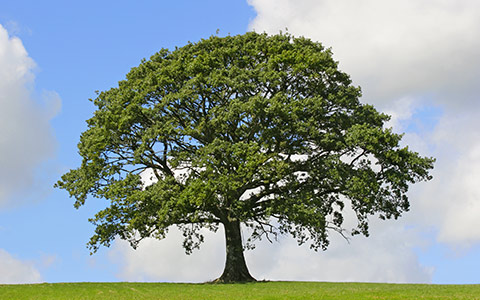
• Southern Magnolia
• Green Ash
• White Oak
• Southern Red Oak
Tip: When planting multiple trees, understory trees can be planted near overstory trees as protection from strong or persistent winds.
For more info, refer to 72tree.com/tree-buying-tips/ before purchasing the trees you intend to plant.
Planting Your Tree
When planting a seedling or sapling, the following should be considered in the preparation of the planting location:
Surrounding Soil – Organic material or pH stabilizing material should be mixed into the soil in no less than a 2-foot radius of where the tree will be planted.
Tip: When transplanting a more developed tree, treat the soil in a 3 to 4-foot radius of the planting location.
Dig the Hole – Measure the distance from the bottom of the trunk to the bottom of the roots or root ball; this is how deep your hole must be. The hole must also be wide enough for the entire root ball to fit without being cramped or bent.
Tip: To confirm the accuracy of the depth, allow the tree to rest in the hole paying particular attention to where the roots connect to the tree. Known as the root flare, it should remain just above the ground.
Water in the Hole – Before planting your tree, provide a deep watering for the hole, allowing water to soak deep into the earth below. This moisture will encourage roots to grow deep.
Plant the Tree – Now that your hole is dug, the soil enriched, and the ground watered, place your tree in the hole covering the roots with soil up to the root flare.
Tip: When covering the roots with soil, do not overly compact it. Water the newly planted tree and allow the soil to settle. As the soil settles, add more to the top, keeping the root flare just above ground level.
Watering – Your newly planted tree should receive a deep watering 2 to 3 times per week. Avoid shallow waterings as they encourage roots to grow to the surface.
Tip: Use a slow-release watering system which maintains constant moisture while allowing proper drainage for excess water.
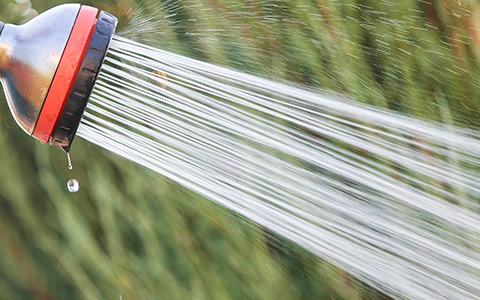
During rainy seasons, scale back the watering schedule and increase it during periods of drought. Don’t allow the soil to dry out for newly planted trees completely.
Fertilizer – If you have prepared the soil in and around the planting location, no fertilizing should be necessary for the first full year of growth.
Tip: Use organic mulch around the tree. As it decays, mulch releases nutrients into the soil. An added advantage is that mulch helps the soil retain moisture and warmth, both of which are fundamental for healthy root growth.
Tree Planting and Your Landscape
Your tree is likely to struggle and die without considering the factors that influence its growth when it is planted.
In this article, you discovered how to determine the correct tree species for your landscape, how to prepare the planting location, and pro tips to help you avoid common mistakes when planting a tree.
Your lack of knowledge about soil, sun, water, location, and species when planting a tree can result in its declining health and eventual death.
Sources:
extension.umn.edu/planting-and-growing-guides/watering-newly-planted-trees-and-shrubs
static.colostate.edu/client-files/csfs/pdfs/TreePlanting_636.pdf
extension.umn.edu/trees-and-shrubs/choosing-evergreens-your-landscape
Notice: Undefined variable: page in /home/vrxdg1855sn3/public_html/wp-content/themes/72tree/content.php on line 15
Notice: Trying to get property 'ID' of non-object in /home/vrxdg1855sn3/public_html/wp-content/themes/72tree/content.php on line 15
How to Fix Exposed Tree Roots
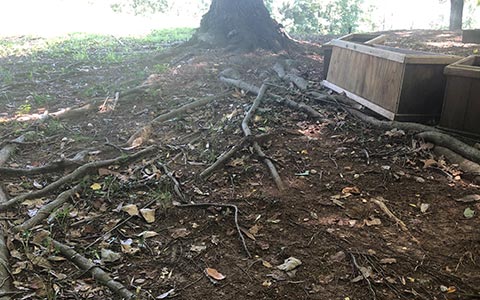
Are ugly surface roots buckling your concrete driveway or stopping you from mowing your lawn? Before you get frustrated and cut them out, there are some things you need to know.
72tree.com gathered the following information on how to handle surface roots without compromising the health of your tree.
Why Do Tree Roots Surface
While some roots grow deep in the ground, the majority of them spread out from the trunk within the first 4 to 12 inches of soil. As the tree ages, several factors may bring them to the surface:
Erosion – Over time, the top layers of soil may be washed away, lowering the ground level, subsequently exposing tree roots.
Soil Compaction – As tree roots spread out, they seek moist aerated soil to derive water and nutrients. When they run into compacted soil, they will turn downward or upward, and in many cases will grow along or just beneath ground level.
Natural Growth – The same way a tree trunk and limbs increase their girth with age, so do roots. Since the majority of tree roots grow within the first few inches of soil, they tend to break the surface as they thicken.
Species – Some trees grow this way. Species such as maples, poplars, and willows tend to grow surface roots.
As annoying as it may be, surface roots are a common landscape problem that can cause significant and costly damage.
Surface Root Problems
When tree roots surface, there are many potential issues they bring with them. Those issues may include:
Disease, Infestation, and Rot – Surface roots are highly susceptible to being injured or damaged by landscaping equipment, foot traffic, or wildlife. Damaged surface roots are easily infected by disease, or infested by insects and can carry harmful pathogens to the trunk and branches of the tree.
Damaged Driveway or Sidewalk – As these roots thicken and surface, the ones that have grown under sidewalks, driveways, and foundations will eventually exert enough pressure to raise or break them.
Read more on how tree roots can buckle a driveway and what to do at 72tree.com/tree-roots-buckling-concrete-driveway/
Damaged Landscape Equipment – Lawnmowers and other mechanical equipment can be severely damaged when making contact with surfaced tree roots.
Abnormal Growth – Where Tree roots surface, any grass or plant life surrounding those roots may become sparse or die.
Trip Hazard – When surface roots are further exposed by erosion, they may become a severe trip hazard when navigating your landscape.
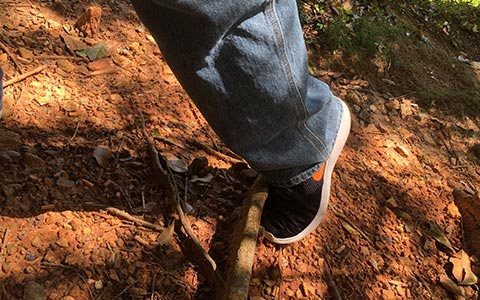
Surface Root Solutions
While cutting the roots away may seem to be the best alternative, it is not. Cutting away roots (like damaging them) leaves the tree highly susceptible to deadly diseases and infestation.
The following are ways to resolve surface root issues without causing severe damage to the tree:
Mulch – At the first sign of roots breaking the surface, lay down a 2 to 3-inch layer of organic mulch. Mulch will help the soil retain moisture, and over time may redirect the roots to grow downward.
Soil Replacement – In cases of erosion exposing roots, lay down a 3 to 4-inch layer of soil to replace what was eroded. To prevent further erosion, you can mulch the area around the tree, seed the new soil with grass, or lay down sod.
Plant Plants – Where erosion is not the problem, one solution may be planting the area with taller ground cover or plants that won’t need mowing. As you create this “tree root garden,” take care to avoid damaging the roots while planting.
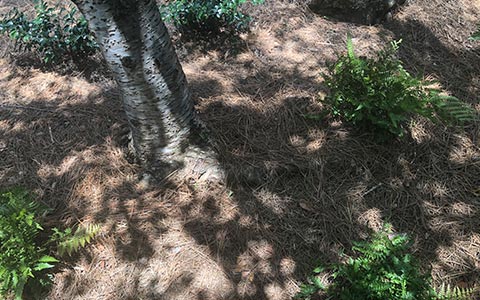
If you are still inclined to have the roots removed, hire an arborist to do this for you. Depending on the damage that may have already occurred, and type of roots that will be removed, it may be suggested to remove the tree.
Surface Root Prevention
Avoid the inconvenience of surface roots by taking action before they come to the surface:
Planting Location – Each tree species has a preferred type of soil, light, and nutrients for healthy growth. By planting trees in optimal conditions for their species, roots will be less likely to surface as the tree ages.
Soil – The soil type, moisture level, nutrient content, and pH level affect how tree roots grow. Deep watering, seasonal fertilizing, and annual pH level adjustments will encourage tree roots to grow deeper.
Species – As mentioned earlier, some tree species are prone to grow surface roots. When selecting trees for your landscape or yard, be sure to ask about the tree’s growth patterns, and do your research on the species needs for optimal growing conditions.
Read more about tree planting and care at 72tree.com/tree-planting-guide/
Exposed Tree Root Solutions
Don’t let gnarly surface roots discourage you from having a beautiful landscape. There are ways to incorporate them in your design without fatally wounding your tree.
In this article, you discovered why tree roots come to the surface, the problems they can cause, and measures you can take to solve and prevent them.
Your mishandling or damaging of surface roots can lead to the health decline and death of your tree. Before you cut roots away, call a professional to evaluate the situation and offer alternatives to save your landscape and your tree.
Sources:
https://extension.umd.edu/hgic/topics/surface-roots
https://www.purdue.edu/hla/sites/yardandgarden/when-tree-roots-surface/
Notice: Undefined variable: page in /home/vrxdg1855sn3/public_html/wp-content/themes/72tree/content.php on line 15
Notice: Trying to get property 'ID' of non-object in /home/vrxdg1855sn3/public_html/wp-content/themes/72tree/content.php on line 15
How is Your Tree Fighting Global Warming
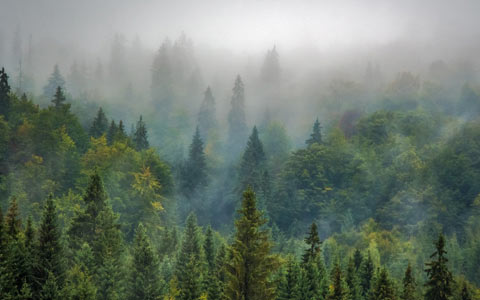
Did you know that your tree is part of a global carbon sequestration system that sustains breathable air for the human race? In fact, without trees, life on earth as we know it would cease to exist.
72tree.com gathered essential information about the role of carbon sinks and how keeping your tree healthy plays a vital role in combating global warming and sustaining breathable air.
What Are Carbon Sinks
A carbon sink is a natural system that absorbs, uses, and stores carbon dioxide from the atmosphere. Technically, you could say that anything that absorbs more carbon than it releases is a carbon sink.
Earth’s principal carbon sinks are:
Trees and Plants – Trees and plants use carbon dioxide captured from the atmosphere for their photosynthesis (food making) process.
Oceans – The oceans play a significant role in storing carbon dioxide. Some marine life will capture the gas for photosynthesis, while some of the gas simply dissolves in the water.
Soil – As plant life dies and decomposes, a portion of its captured carbon dioxide is transferred to the soil.
Nearly a quarter of the carbon dioxide humans have released into the atmosphere has been absorbed by trees and plants. As atmospheric carbon dioxide levels increase, so increases carbon fertilization.
Carbon Fertilization and Tree Growth
As atmospheric carbon dioxide levels increase, more is available to convert to plant matter through photosynthesis, and trees can grow more. This increased growth is referred to as carbon fertilization.
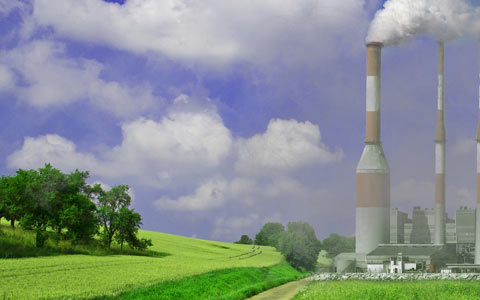
Because of carbon fertilization, trees will continue to grow larger and for more extended periods, as long as their necessity for water, sunlight, and nutrients (primarily nitrogen) is met. If a tree is missing just one of these necessities, it will not grow regardless of the abundance of the others.
Tree Planting and Forest Conservation
Tree planting and forest conservation are vital activities towards the reduction of mankind’s carbon footprint, as trees are remarkably efficient at carbon sequestration, they provide up to 30% of the global action required to stop climate change.
In fact, a single healthy tree is capable of releasing around 6,000 pounds of breathable oxygen over 50 years. That’s about the oxygen consumption of 4 people per year.
With 3.04 trillion trees worldwide and a world population of 7.53 billion, trees alone produce approximately 4,845 pounds of oxygen per person per year. While this number seems reasonably sufficient, carbon emissions are on the rise around the globe, leaving the ominous question of “How long can our trees sustain our oxygen requirements?”
Along with rising carbon emissions, trees and forests, do not always act as carbon sinks. In fact, massive carbon releases by trees may occur at any time when triggered by:
• Deforestation
• Tree and plant decay
• Forest fires
• Wildfires
• Volcanic eruptions
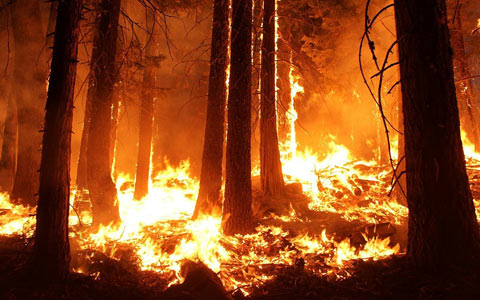
Suffice it to say that as long as carbon emissions continue rising, and the global tree population is threatened, the delicate balance of carbon sequestration and oxygen production can easily slide in the wrong direction.
Tree and forest conservation is one of our best weapons to fight global warming, and it starts in your yard. Keep your trees healthy by making sure they:
• Are planted in the right place
• Have the best soil type for the species
• Have sufficient water
• Are fertilized before their growth period
• Are seasonally pruned
• Are properly mulched
• Inspected annually for disease and infestation
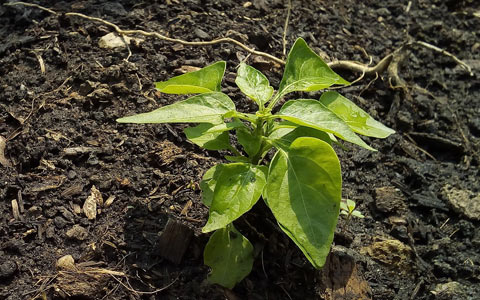
Learn more about planting trees at 72tree.com/tree-planting-guide/
When living near or visiting a forest, you can participate in its conservation by:
• Camping in only designated areas
• Removing or disposing of your trash properly
• Building fires in designated fire-pits
• Fully extinguishing fires before leaving
• Disposing of matches and cigarette butts properly
• Not discharging fireworks
• Reporting suspicious activities
• Notifying park rangers of dead or dying trees
• Avoiding all activities that can physically harm trees
Learn more about forest conservation and preventing wildfires at redcross.org/get-help/how-to-prepare-for-emergencies/types-of-emergencies/wildfire/how-to-prevent-wildfires.html
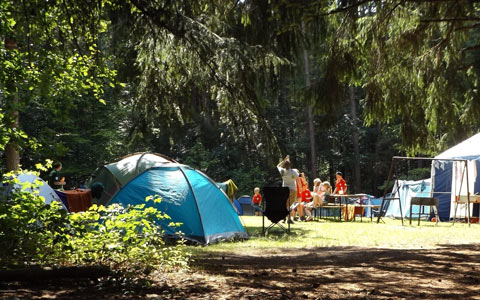
Your Tree, Climate Change, and Global Warming
It may be hard to imagine, but by keeping your trees healthy, you are actively pushing back against climate change and global warming. The human race owes its breathable air to the global population of trees, as they sequester carbon dioxide and release the oxygen we breathe.
In this article, you discovered the function and importance of carbon sinks, how your tree plays a significant role in global oxygen production, and how healthy trees and forests help to stop climate change and reverse global warming.
By keeping your trees healthy, you are actively participating in the reduction of atmospheric carbon dioxide, thus slowing climate change and global warming.
Sources:
https://earthobservatory.nasa.gov/features/CarbonCycle/page5.php
https://www.americanforests.org/blog/forests-carbon-sinks/
https://www.nasa.gov/feature/goddard/2016/carbon-dioxide-fertilization-greening-earth
https://www.conservation.org/stories/Pages/14-forest-conservation-facts-you-need-to-know.aspx
https://www.npr.org/2015/12/26/461095807/tree-counter-is-astonished-by-how-many-trees-there-are
Notice: Undefined variable: page in /home/vrxdg1855sn3/public_html/wp-content/themes/72tree/content.php on line 15
Notice: Trying to get property 'ID' of non-object in /home/vrxdg1855sn3/public_html/wp-content/themes/72tree/content.php on line 15
The Stunning Southern Magnolia Tree and its Flower
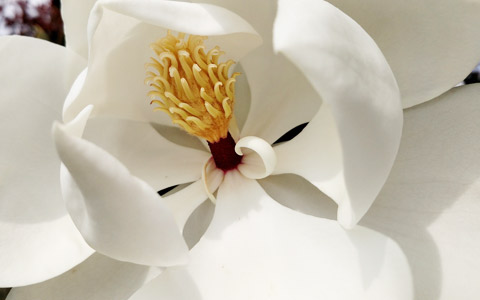
The Southern magnolia (Magnolia grandiflora) is an essential tree for yards and landscapes in hardiness zones 6 through 10, for its size, year-round beauty, and its enormous creamy white flowers.
72tree.com gathered essential information on the Southern magnolia tree, its characteristics, incredible flowers and their blooming season.
Magnolia Tree Information
Magnolia grandiflora, with its full luxurious look, is a favorite specimen around the world. The following are some of its features:
Family – Magnoliaceae
Height – 50 to 80 feet at maturity with some reaching 90 feet.
Width – The base of a fully mature magnolia can reach 40 feet in diameter.
Foliage – Mature leaves are dark glossy green and densely grow up to 8 inches in length by 5 inches wide.
DBH – The diameter at breast height of a fully mature magnolia tree can reach 24 to 36 inches.
Crown Width – This species grows in a pyramidal shape, its mid and lower sections can reach a diameter of 30 to 40 feet and tapers upward to a pointed or rounded crown.
Leaf Drop – While Magnolia grandiflora is an evergreen species, it will drop light foliage throughout the year.
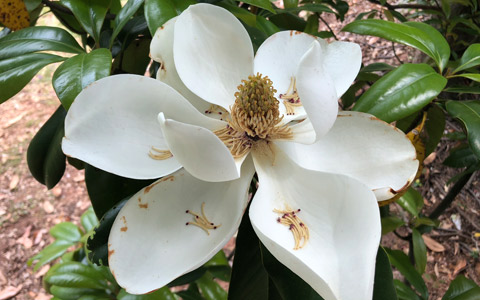
Blooms – The flowers of Magnolia grandiflora are creamy white and can reach up to 12 inches in diameter.
Pests – While magnolia trees are generally free of significant pest problems, some varieties of scale, aphids, mealybugs, spider mites, and leafminers present potential infestations.
Disease – There are several fungi which can cause leaf spots, and in some cases, may lead to heart rot. However, for the most part, fungi are unable to cause any significant damage to adult magnolias. In the event of severe leaf drop or branch dieback, an arborist should be called to evaluate the situation and recommend a course of action.
This magnificent species, native to the southeastern United States, has been planted in cities all over the world. It’s no wonder that Magnolia grandiflora became an instant hit when it was taken to Europe in the 1700s.
Due to its adaptability to many climates and soil types, and its unique beauty, this species has become one of the most widely planted ornamental evergreen trees in the world.
To learn more about the USDA Hardiness Zone Map, read Trees, Shrubs, and the USDA Hardiness Zone Map at 72tree.com/trees-shrubs-usda-hardiness-zone-map/
Magnolia Tree Flower
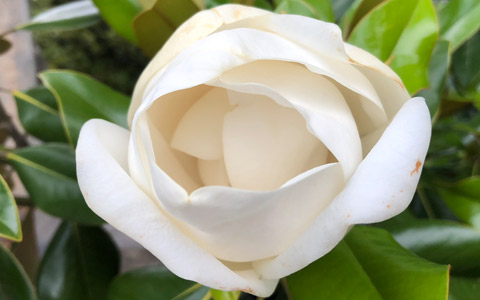
The majestic Southern magnolia tree has an incredibly dominating presence from mid-summer through the end of winter. However, in early to mid spring, this specimen displays its true glory and reason for its worldwide admiration.
When the Southern magnolia blooms, it blooms at the tips of twigs all over with dozens of white lemon citronella-scented flowers open at a time. Healthy mature magnolias bloom consecutively until mid-summer, and these enormous flowers range in size, reaching up to 12 inches in diameter and lasting up to 7 days from bloom to wilt.
The Magnoliaceae family is among the eldest of tree families in existence. Due to this, we get to witness two pre-evolutionary aspects of flowers:
Tepals, not Petals – In magnolia flowers, the petals are fused with the sepals (sepals are typically green and function as protection for the flower while in bud); therefore, the correct terminology for these parts is tepals. The tepals of the magnolia flower are usually arranged in two whorls of 3 to 6 tepals each.
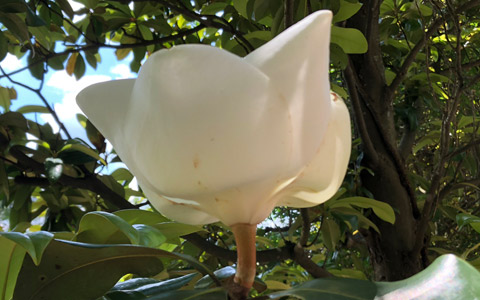
No Nectar Here – That’s correct, magnolia flowers do not produce nectar. These flowers attract pollinating beetles with their fragrant and sugary secretions.
The beautiful magnolia flower is the state flower of Mississippi and Louisiana, while the tree itself is the state tree of Mississippi. It should come as no surprise that the largest Southern magnolia is located in Smith County, Mississippi, measuring more than 122 feet tall with a DBH greater than 6 feet.
The Flowering Magnolia Grandiflora
If you live in the South and your landscape doesn’t include a Southern Magnolia, you’re missing out on one of the oldest and most beautiful blooming evergreen trees in existence.
In this article, you discovered a wealth of information about the Southern magnolia tree and its beautiful flowers.
If your property lies within hardiness zones 6 through 10, and you have yet to plant a magnolia tree, you should consider doing so for the beauty of the tree and the elegance of its sensational flowers.
Sources:
https://plants.ces.ncsu.edu/plants/all/magnolia-grandiflora/
https://hgic.clemson.edu/factsheet/magnolia/
https://www.arborday.org/trees/treeguide/TreeDetail.cfm?ItemID=863
https://edis.ifas.ufl.edu/st371
Notice: Undefined variable: page in /home/vrxdg1855sn3/public_html/wp-content/themes/72tree/content.php on line 15
Notice: Trying to get property 'ID' of non-object in /home/vrxdg1855sn3/public_html/wp-content/themes/72tree/content.php on line 15

Tree Service and Removal in Roswell Georgia
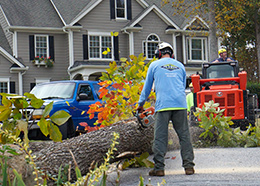
Whether it’s an emergency or you simply want to enhance your landscape, 72 Tree, Seed & Land Co. offers a wide variety of professional tree services to the Roswell, Georgia community.
Roswell is a community with a tremendous amount of trees. Eventually, you will need a professional tree service to trim or remove hazardous or damaging trees from your property. 72 Tree is the most knowledgeable and experienced tree service in Roswell Ga. We assist our customers spruce up their landscape and will assess and remove dead or dying trees to avoid costly disasters. We are your Roswell tree removal service experts that offer the following tree services to both Roswell residents and businesses:
TREE REMOVAL
Our team works in compliance with all federal, state and local laws, executing precise and professional tree removal services, reducing the chance of damage to your driveway, landscape, and all other areas of your property. We utilize specialized equipment and employ a highly vetted and trained team to safely manage your job, and get it right the first time.
EMERGENCY TREE REMOVAL
72 Tree is on call 24 hours a day, 365 days a year to handle any Roswell emergency tree service and removal job. Call our emergency helpline anytime (678) 223-5495 to speak with an insurance and emergency tree specialist. We have seen every aspect of tree and property damage. We understand the process, from start to finish, and know the pitfalls to avoid.
TREE TRIMMING & PRUNING
One of our trained, experienced tree care specialist and certified arborist will work with you to reach pruning and landscape aesthetic objectives. We work to combine your vision with our expertise to improve the visual appeal of your property and landscape. Not only will your yard look impressive, but rest assured the health of your trees was considered and protected throughout the process
ARBORIST
The arborists that we employ are highly skilled and trained. Our professionals possess immense knowledge on properly caring for your trees, and procedures that are in consideration of their health and well being. In Roswell when you need the best arborist to assess or care for your tree, give us a call.
Our tree service is ready to assist no matter the time or your needs. We service all of Roswell, Georgia and look forward to helping you.
72 Tree is available 24 hours a day, 365 days a year
CALL TODAY: 678.223.5495
Notice: Undefined variable: page in /home/vrxdg1855sn3/public_html/wp-content/themes/72tree/content.php on line 15
Notice: Trying to get property 'ID' of non-object in /home/vrxdg1855sn3/public_html/wp-content/themes/72tree/content.php on line 15

Emergency Tree Removal Service in Roswell Georgia
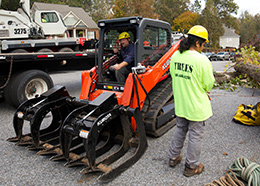
Roswell’s best emergency tree removal company is 72 Tree, Seed & Land Co.
Do you know who to call when you need emergency tree removal in Roswell? Roswell’s leading tree professionals, 72 Tree, Seed & Land Co.
Roswell is a North Georgia suburb with an incredible amount of trees woven throughout the city. As all trees will eventually die or fall, it should come as no surprise that emergency tree removal in Roswell Ga is a vital service. Emergency tree removal could be needed to provide access to your driveway, or to lift a tree off of your home or other property. Other times, property owners face dangerous situations like a broken tree branch, lightning damaged tree, or a tree that has begun to lean precariously.
72 Tree is available 24 hours a day, 365 days a year to resolve any and all of your emergency tree removal needs:
- 72 Tree is a premier emergency tree removal specialist and Roswell tree service expert for large, complex and limited-access tree jobs.
- We are able to efficiently cut and remove any damaged or felled tree (due to ice, snow, wind, rain, flood, fire, and/or lightning)
- Our veteran property loss experts will assist you through all phases of the insurance claim process.
- Our emergency crane operators are NCCO (National Commission for the Certification of Crane Operators) compliant and dually qualified to safely perform work in confined spaces or dangerous situations.
- 72 Tree has the capacity to handle any storm cleanup projects regardless of the size or scope.
CALL TODAY: 678.223.5495
Can 72 Tree assist with loss recovery and file a claim with my insurance company?
One of the greatest difficulties home and property owners in Roswell, Georgia face when in need of emergency tree removal services is working with their insurance company. 72 Tree maintains a fully staffed division dedicated to assisting our customers get their claims filed and recover their settlement funds from their insurance company.
- 72 Tree specializes in large loss claims, and can facilitate you in working with your insurance company.
- Our team of emergency claims experts are well versed in how insurance policies can affect tree work. We understand the complicated insurance contracts, the industry standards for determining “standard and reasonable” costs, and what is ‘covered’ damage.
- Our technical claims specialists have mitigated insurance claims for more than 45 years. We have worked with most platinum insurance companies, including State Farm, Amica, Liberty Mutual, Atlanta Claims, Safeco, USAA Atlanta Claims, ACE, Chubb, and many others.
- We offer 24-hour emergency claim support whose sole purpose is to provide support, exceed the policyholder’s expectations, and mitigate fairly with master adjusters.
CALL TODAY: 678.223.5495
Why we are the leading emergency tree service in Roswell Ga?
Bad weather strikes without warning, bringing a slew of problems like a tree crashing through your roof and home. Tree removal is dangerous and demanding – this is not the time to take your chances with a cheap and limited experienced company. You can rely on 72 Tree’s 45+ years of experience to handle your emergency tree removal quickly, safely, and professionally.
72 Tree has all of the necessary tools, fully staffed crew, and are available day or night 24/7. Whether your emergency requires a skilled team of climbers, or a 90-ton crane, our experience, knowledge, and commitment to our customer’s and profession will restore your family’s safety and peace of mind.
- Our 24-hour emergency help line (678-223-5495) will connect you with a live employee, 7 days a week, 365 days a year.
- Our professional emergency personnel will thoroughly cover the damaged areas of your property with tarps and other protective materials. We can also assist in water, wood, glass, and insulation cleanup.
- We take the time to assist our clients with locating alternative electricity and if needed, emergency accommodations following major tree damage.
- Our Emergency Division will also respond to text messages. Save our number (678) 223-5495 so it will be at hand in the event of an emergency.
- 72 Tree provides a completely hassle-free service at a time when you and your family need it most.
Our emergency removal team is ready to assist no matter the time or your needs. We service all of Roswell Georgia and look forward to helping you.
72 Tree is available 24 hours a day, 365 days a year
CALL TODAY: 678.223.5495

